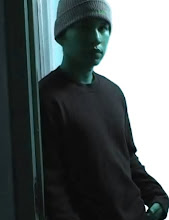A man with a boat is located at point P on the shore of a circular lake of radius 6 miles. He wants to reach the point Q on the shore diametrically opposed to P as quickly as possible. He plans to paddle his boat at an angle t to PQ to some point R on the shore, then walk along the shore to his Q. If he paddle 3.1 miles per hour and walk 4 miles per hour, what is the shortest time it will take him to reach Q?

To solve this problem, we need to minimize the following function of the angle t:
f(t) = ____________________
A stationary point for f(t) is
t = __________.
(Write DNE if there is none.)
We conclude that the minimal possible time for the trip is = _________.
The maximal possible time for the trip is = __________.
The basic equation for the travel time is:

The crux of the problem lies on the expression of travel time as a function of angle t. It should also be noted that the rate of moving by boat is not the same as the speed of walking. If these rates are the same, the problem becomes very easy.
Give the restrictions, the easiest solution for me is the use of the right angle conjecture when a triangle is inscribed in a semicircle, there is always a right angle anywhere along the perimeter when the two other points of the triangle are diametrically opposed to each other.
This is shown in the figure below. Angle PRQ must be 90 degrees.

From here, length PR can be expressed solely in terms of t.
The other problem is to get the relationship between angle a and t. Another figure clarifies this. When angle a becomes 90 degrees, t is pushed upward by the moving leg of angle a. The line connecting the vertex of t and the endpoint of that leg at the perimeter of the circle becomes shorter. This is illustrated below:

This essentially simplifies the equation into:

So, the answers are:
>stationary point t = 0.8867 rad
>shortest travel time is at f(t) = f(0) = 3.87 hrs
>longest travel time is at the critical point t which makes f(t) = 5.11 hrs.
This problem actually took me quite a while to solve. My lack of familiarity with the right angle conjecture led me to 7 equations that only complicated the problem.
In another piece (Winter wonders), I wrote about my adventure at Mirror Lake. This time, solving this problem gives me another conquest of the lake.


No comments:
Post a Comment